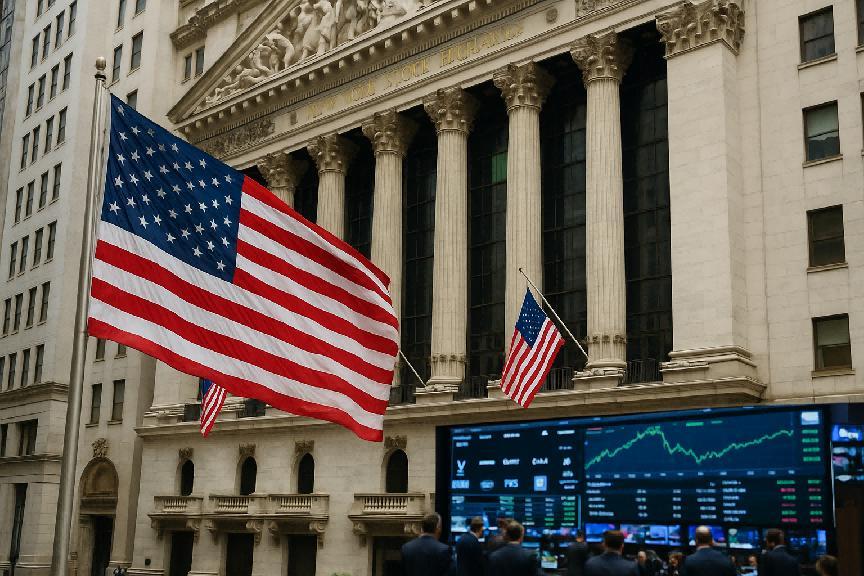
Recently, the US capital market has drawn much attention due to a wave of ipos following Labor Day. Well-known enterprises such as Klarna and Gemini have successively launched roadshows, attempting to achieve their financing targets during the autumn window period. Meanwhile, market concerns over the Trump administration's tariff policies have eased, and the recovery of optimism in the stock market seems to have injected a strong dose of confidence into the IPO market.
First of all, it remains questionable whether the easing of tariff concerns is sustainable. The Trump administration's repetitive trade policy is not the first time. Its tariff adjustments often serve short-term political goals rather than long-term economic planning. Although the current market has temporarily breathed a sigh of relief due to the delay in the implementation of some tariff measures, this "easing" is more of a temporary pause at the policy implementation level rather than a shift in strategic direction. For IPO enterprises that rely on global supply chains, potential fluctuations in tariff policies may still become an uncertain factor on the cost side at some point in the future. For instance, technology hardware companies may face the pressure of rising raw material prices, while consumer goods enterprises need to deal with the demand fluctuations brought about by the adjustment of terminal selling prices. This policy risk has not truly dissipated; it has merely been temporarily masked by the optimistic sentiment in the market.
Secondly, there is also controversy over whether the foundation supporting the optimistic sentiment in the stock market is solid. The current rise in the US stock market is partly due to expectations of a shift in the Federal Reserve's monetary policy and the phased improvement in corporate earnings. However, whether this optimism can be sustained depends on the combined effect of multiple factors. On the one hand, signs of a global economic growth slowdown are becoming increasingly evident, and the weak demand in major economies such as Europe may be transmitted to the US market through trade channels. On the other hand, although domestic inflationary pressure in the United States has eased to some extent, problems such as a tight labor market and high service prices have not been completely resolved. If future economic data shows an unexpected decline or the growth rate of corporate profits fails to meet market expectations, the optimistic sentiment in the stock market may reverse rapidly, thereby exerting pressure on IPO pricing and subsequent performance.
Furthermore, from the structural characteristics of the IPO market, it remains to be seen whether the current boom indicates long-term health. Analysts predict that the US IPO market will remain strong in 2025 and 2026, but this forecast is based on optimistic assumptions about the macroeconomic environment, policy stability and market sentiment. Historically, the prosperity of the IPO market has often been accompanied by the risk of bubble formation. For instance, during the period of 2020-2021, the SPAC craze driven by a low-interest-rate environment ultimately ended with a large number of shares breaking their issue prices and investor losses. At present, although some enterprises choose to go public when market sentiment is high, whether their valuations are reasonable and whether their business models are sustainable still need to be strictly tested by the market. Especially for technology start-ups, their high valuations are often based on high expectations for future growth. However, once the performance falls short of expectations, the pressure for valuation correction may increase significantly.
Furthermore, from the perspective of investor behavior, the current activity level of the IPO market may partly stem from the "fear of missing out" (FOMO) mentality. Against the backdrop of an overall market rally, investors are worried about missing potential money-making opportunities and thus tend to participate in the subscription of new shares. However, such irrational behavior may lead to some mediocre companies being overly pursued, thereby distorting the market pricing mechanism. In the long term, such short-term behavior may undermine the efficiency of resource allocation in the market and even plant hidden dangers for future adjustments.
To sum up, although the activity of the US IPO market in the autumn has brought certain vitality to the capital market, from the perspective of the deep-seated logic of the financial market, the hidden concerns behind it cannot be ignored. The potential fluctuations in tariff policies, the fragility of optimism in the stock market, the accumulation of structural risks in the IPO market, and the irrational characteristics of investor behavior may all pose challenges to the long-term health of the market. For market participants, while enjoying short-term dividends, it is even more necessary to keep a clear mind and carefully assess the balance between risks and returns. After all, the prosperity of financial markets is never a one-sided upward curve, but rather an art of constantly seeking balance amid fluctuations.

Due to the continuous decrease in rainfall and the rapid drop in groundwater levels, several large sinkholes have successively appeared in several agricultural areas in central Turkey in recent years, causing great concern among local farmers and environmental experts.
Due to the continuous decrease in rainfall and the rapid dr…
The Prime Minister's Office of Israel said Hamas attacked I…
Fourteen countries including the United Kingdom, France and…
The US Department of Justice said on Wednesday (December 24…
The Japanese government has submitted a draft, planning to …
On December 25th local time, NVIDIA announced a technology …